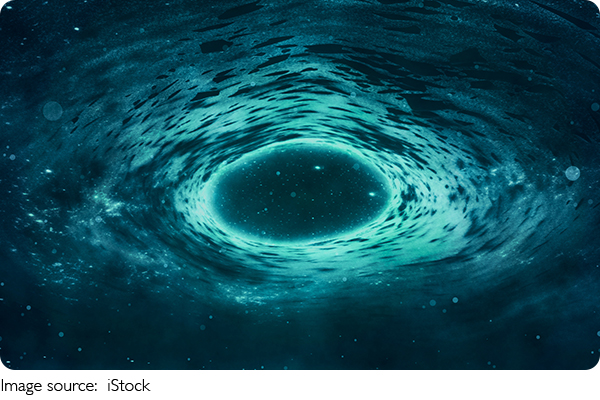Black Hole Secrets

We often hear about black holes as mysterious cosmic monsters, but what exactly are they? Black holes are regions in space where gravity is so strong that nothing, not even light, can escape.
This makes them invisible and incredibly intriguing. Understanding black holes helps us learn more about the universe's most extreme conditions and the laws of physics.
What Is a Black Hole?
A black hole forms when a massive star collapses under its own gravity at the end of its life. This collapse squeezes matter into an incredibly small space, creating a point called a singularity—where density becomes infinite. Surrounding the singularity is the event horizon, the boundary beyond which nothing can return.
Because light cannot escape, black holes appear completely black. However, scientists detect them by observing how their gravity affects nearby stars and gas, or by spotting X-rays from hot matter swirling around them.
Types of Black Holes
There are different sizes of black holes. Stellar black holes form from dying stars and typically have a few to tens of times the mass of our sun. Supermassive black holes, millions or billions of times heavier, exist at the centers of galaxies, including our Milky Way. Scientists believe these giants formed alongside their galaxies.
There are also intermediate black holes and possibly primordial black holes, which might have formed soon after the Big Explosion.
How Do We Detect Black Holes?
Since black holes don't emit light, we rely on indirect methods. One way is to watch stars orbiting an invisible point, revealing a massive object's presence. Another is to observe the bright accretion disk—a swirling ring of gas heated to extreme temperatures as it falls toward the black hole.
Gravitational waves, ripples in spacetime caused by black hole collisions, also provide evidence. These waves were first detected in 2015, opening a new window into black hole research.
The Strange Physics Near Black Holes
Near a black hole, gravity warps space and time in extreme ways, as predicted by Albert Einstein’s theory of general relativity. Time dilation becomes profound near the event horizon—the boundary beyond which nothing can escape. To a distant observer, time appears to slow dramatically for an object falling toward the black hole, eventually seeming to freeze at the event horizon.
Inside the event horizon, classical physics breaks down. The singularity—a point of infinite density—defies current scientific understanding, as neither general relativity nor quantum mechanics alone can fully describe its nature. This paradox is central to the quest for a unified theory of quantum gravity.
Recent research by physicists such as Stephen Hawking, who proposed Hawking radiation, suggests black holes can slowly evaporate, challenging the notion that nothing escapes them. Modern efforts, including those at institutions like the Perimeter Institute and CERN, focus on reconciling quantum mechanics with gravity through approaches like string theory and loop quantum gravity.
Furthermore, the Event Horizon Telescope collaboration’s groundbreaking imaging of the supermassive black hole in galaxy M87 has provided unprecedented empirical data, fueling new insights into black hole physics and spacetime behavior near these enigmatic cosmic objects.

Why Black Holes Matter to Us
Black holes are not just cosmic curiosities. They help us test fundamental physics under extreme conditions. Studying them improves our understanding of gravity, spacetime, and the origins of the universe.
Additionally, black holes influence system formation and evolution, shaping the cosmos on a grand scale.
What Do You Think About Black Holes?
We've explored the amazing and mysterious world of black holes—from their formation to their strange effects on space and time. What fascinates you most about these cosmic giants? Would you like to learn more about how scientists study them? Share your thoughts and questions with us!
-
 Microbiome Hidden WorldDiscover the invisible ecosystem inside our bodies and how it shapes our health and wellbeing every day
Microbiome Hidden WorldDiscover the invisible ecosystem inside our bodies and how it shapes our health and wellbeing every day -
 Robot Ethics ChallengesExploring the moral questions and responsibilities as intelligent robots become part of our daily lives
Robot Ethics ChallengesExploring the moral questions and responsibilities as intelligent robots become part of our daily lives -
 Light’s Dual NatureExploring light’s wave-particle duality and the universal speed limit that shapes our understanding of physics
Light’s Dual NatureExploring light’s wave-particle duality and the universal speed limit that shapes our understanding of physics